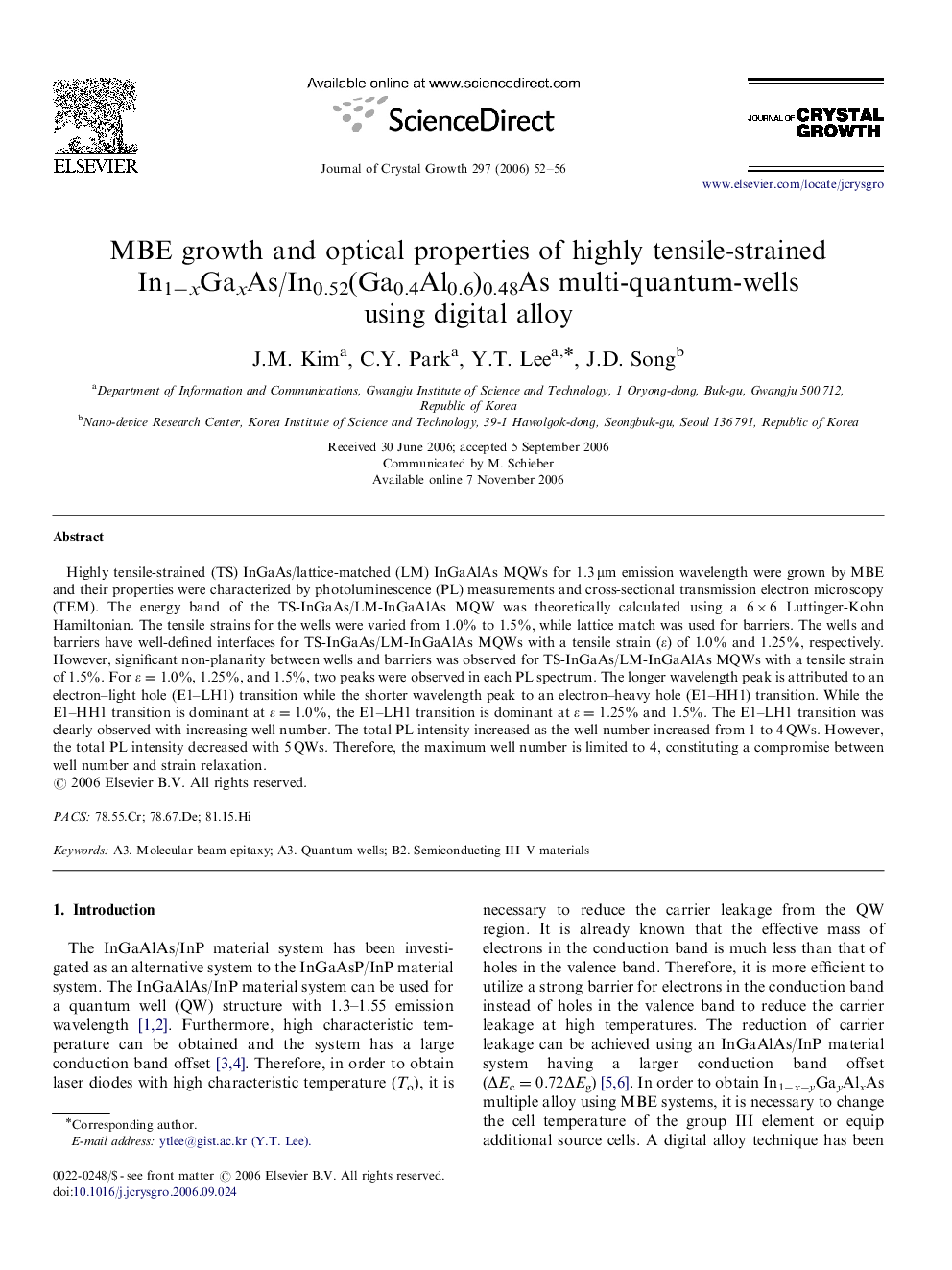| کد مقاله | کد نشریه | سال انتشار | مقاله انگلیسی | نسخه تمام متن |
|---|---|---|---|---|
| 1797081 | 1023765 | 2006 | 5 صفحه PDF | دانلود رایگان |
عنوان انگلیسی مقاله ISI
MBE growth and optical properties of highly tensile-strained In1âxGaxAs/In0.52(Ga0.4Al0.6)0.48As multi-quantum-wells using digital alloy
دانلود مقاله + سفارش ترجمه
دانلود مقاله ISI انگلیسی
رایگان برای ایرانیان
کلمات کلیدی
موضوعات مرتبط
مهندسی و علوم پایه
فیزیک و نجوم
فیزیک ماده چگال
پیش نمایش صفحه اول مقاله

چکیده انگلیسی
Highly tensile-strained (TS) InGaAs/lattice-matched (LM) InGaAlAs MQWs for 1.3 μm emission wavelength were grown by MBE and their properties were characterized by photoluminescence (PL) measurements and cross-sectional transmission electron microscopy (TEM). The energy band of the TS-InGaAs/LM-InGaAlAs MQW was theoretically calculated using a 6Ã6 Luttinger-Kohn Hamiltonian. The tensile strains for the wells were varied from 1.0% to 1.5%, while lattice match was used for barriers. The wells and barriers have well-defined interfaces for TS-InGaAs/LM-InGaAlAs MQWs with a tensile strain (ε) of 1.0% and 1.25%, respectively. However, significant non-planarity between wells and barriers was observed for TS-InGaAs/LM-InGaAlAs MQWs with a tensile strain of 1.5%. For ε=1.0%, 1.25%, and 1.5%, two peaks were observed in each PL spectrum. The longer wavelength peak is attributed to an electron-light hole (E1-LH1) transition while the shorter wavelength peak to an electron-heavy hole (E1-HH1) transition. While the E1-HH1 transition is dominant at ε=1.0%, the E1-LH1 transition is dominant at ε=1.25% and 1.5%. The E1-LH1 transition was clearly observed with increasing well number. The total PL intensity increased as the well number increased from 1 to 4 QWs. However, the total PL intensity decreased with 5 QWs. Therefore, the maximum well number is limited to 4, constituting a compromise between well number and strain relaxation.
ناشر
Database: Elsevier - ScienceDirect (ساینس دایرکت)
Journal: Journal of Crystal Growth - Volume 297, Issue 1, 15 December 2006, Pages 52-56
Journal: Journal of Crystal Growth - Volume 297, Issue 1, 15 December 2006, Pages 52-56
نویسندگان
J.M. Kim, C.Y. Park, Y.T. Lee, J.D. Song,